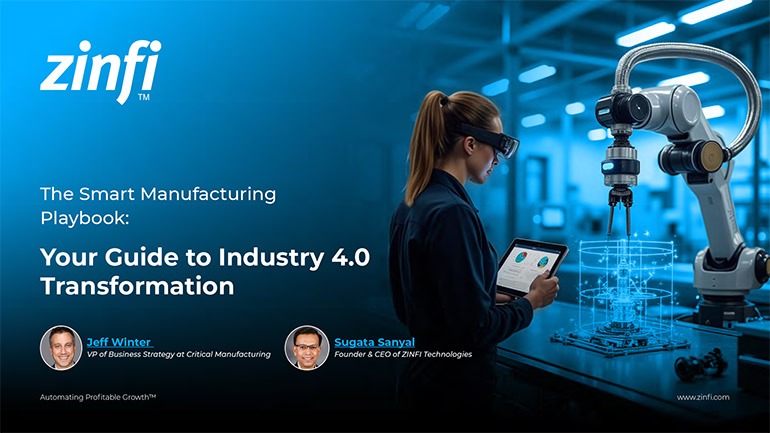Glossary - What is - Sales Process Automation
What is Sales Process Automation?
Sales Process Automation (SPA) refers to using technology to automate repetitive, manual tasks within the sales process. This can include lead management, follow-up communication, data entry, and other activities that can be time-consuming for sales teams. By implementing SPA, organizations can streamline their sales operations, increase efficiency, and improve sales data accuracy. SPA tools often integrate with Customer Relationship Management (CRM) systems, enabling sales teams to focus more on building relationships and closing deals rather than administrative tasks.
SPA plays a crucial role in partner ecosystem management and partner management automation. Automating sales processes helps channel partners manage leads more effectively, track sales activities, and ensure consistent follow-up with prospects. By automating these tasks, partner organizations can better align their sales efforts with corporate strategies, resulting in improved partner performance and higher revenue generation. SPA can also enhance communication between partners and vendors, ensuring everyone is on the same page regarding sales goals and progress.
Key Takeaways:
- Improved Efficiency and Productivity: Sales Process Automation significantly enhances the efficiency of sales teams by automating repetitive tasks. This means sales representatives can spend more time engaging with potential customers and closing deals rather than doing administrative work. Organizations can improve overall productivity and sales performance by reducing the time spent on manual tasks.
- Enhanced Data Accuracy and Management: Automating the sales process ensures that data entry and management are accurate and consistent. Manual data entry is prone to errors, leading to misinformation and mismanagement of sales activities. SPA tools integrate with CRM systems, ensuring that data is automatically updated and accurately reflects the current sales situation. This accuracy is crucial for making informed decisions and developing effective sales strategies. Check out ZINFI’s Channel Data Management (CDM).
- Consistent and Timely Communication: SPA tools enable consistent and timely communication with prospects and customers by automating follow-up emails, reminders, and notifications. This ensures that no lead falls through the cracks and that sales teams can maintain regular contact with potential customers. Timely communication is vital for nurturing leads and moving them through the sales funnel. For strategies on effective communication, explore ZINFI’s Communication Management page.
- Scalability in Sales Operations: As organizations grow, manually managing more leads and sales activities becomes impractical. SPA allows businesses to scale their sales operations without a proportional increase in administrative workload. By automating various aspects of the sales process, companies can handle more leads and close more deals efficiently.
- Better Alignment with Marketing Efforts: Sales Process Automation helps align sales activities with marketing efforts, ensuring a cohesive approach to lead generation and customer engagement. Automated processes can track marketing campaigns’ effectiveness and provide valuable insights into which strategies drive sales. This alignment leads to a more integrated approach to customer relationship management. For insights on aligning sales and marketing, visit ZINFI’s Marketing Management page.
Summary of Key Takeaways:
Sales Process Automation (SPA) is vital for improving sales team efficiency, enhancing data accuracy, ensuring consistent communication, and enabling scalability in sales operations. By automating repetitive tasks, SPA allows sales representatives to focus on closing deals and engaging with customers. It also helps align sales and marketing efforts, leading to a more integrated and practical approach to lead generation and customer engagement. Organizations can leverage SPA to streamline their sales processes, ultimately driving higher revenue and better partner performance.
Key Examples:
- Automotive Manufacturing: SPA can automate lead follow-ups and customer interactions in the automotive industry, allowing sales teams to focus on high-value prospects. For example, automated workflows can send personalized follow-up emails to potential buyers interested in a particular model, ensuring timely communication and increasing the likelihood of a sale.
- Consumer Electronics: Consumer electronics companies can use SPA to manage high volumes of leads generated from online inquiries and retail partnerships. Automated systems can track customer interactions, send promotional offers, and schedule follow-up calls, helping sales teams manage their workload efficiently and close more deals.
- Energy Production: In the energy sector, SPA can streamline the process of managing large-scale sales projects and client relationships. Automated tools can handle contract management, follow-up on service inquiries, and ensure all client interactions are documented and easily accessible for sales teams.
- Financial Services: Financial institutions can leverage SPA to automate compliance-related documentation and client follow-ups. This ensures that all regulatory requirements are met and clients receive timely updates and personalized communication, enhancing customer satisfaction and retention.
- Food and Beverage: The food and beverage industry can benefit from SPA by automating order processing, follow-up communication with distributors, and tracking sales metrics. This enables sales teams to focus on building relationships with key accounts and expanding market reach.
- Healthcare Services: SPA in healthcare can automate patient follow-ups, appointment scheduling, and billing processes. This improves efficiency and ensures that patients receive timely communication, leading to better patient engagement and satisfaction.
- Information Technology: IT companies can use SPA to manage complex sales cycles and large volumes of customer data. Automated tools can track customer interactions, manage quotes and proposals, and ensure sales teams can access accurate and up-to-date information.
- Pharmaceutical Development: In the pharmaceutical industry, SPA can automate the tracking of drug development sales, manage client interactions, and ensure compliance with industry regulations. This helps sales teams stay organized and focused on high-value activities.
- Retail Industry: Retailers can implement SPA to manage customer inquiries, automate follow-up communication, and track sales performance across multiple channels. This allows sales teams to provide a consistent customer experience and drive higher sales volumes.
- Telecommunications: Telecommunication companies can use SPA to automate customer onboarding, manage service inquiries, and track sales activities. This ensures sales teams can efficiently handle extensive customer interactions and maintain high service levels.
Conclusion:
Sales Process Automation (SPA) revolutionizes how organizations handle their sales operations by automating repetitive tasks and streamlining workflows. This technology enhances efficiency, improves data accuracy, and communicates consistently with prospects and customers. By integrating SPA with CRM systems, sales teams can focus on building relationships and closing deals rather than administrative tasks.
In partner ecosystem management, SPA is crucial for aligning sales efforts with corporate strategies, enhancing partner performance, and driving revenue growth. Automated processes enable channel partners to manage leads effectively, track sales activities, and maintain regular communication with prospects.
Key takeaways include improved efficiency and productivity, enhanced data accuracy, consistent and timely communication, scalability in sales operations, and better alignment with marketing efforts. These benefits underscore the importance of SPA in modern sales environments.
Examples from various industry verticals, such as automotive manufacturing, consumer electronics, energy production, financial services, food and beverage, healthcare services, information technology, pharmaceutical development, retail industry, and telecommunications, illustrate how SPA can be applied to different sectors to achieve similar efficiency and performance improvements.
By adopting SPA, organizations can streamline their sales processes, reduce administrative workloads, and focus on high-value activities that drive growth and profitability. SPA transforms the sales landscape and ensures that companies can scale their operations and maintain a competitive edge in their respective industries.
Associated Keywords:
- Sales Automation
- SPA Benefits
- Automating Sales Processes
















